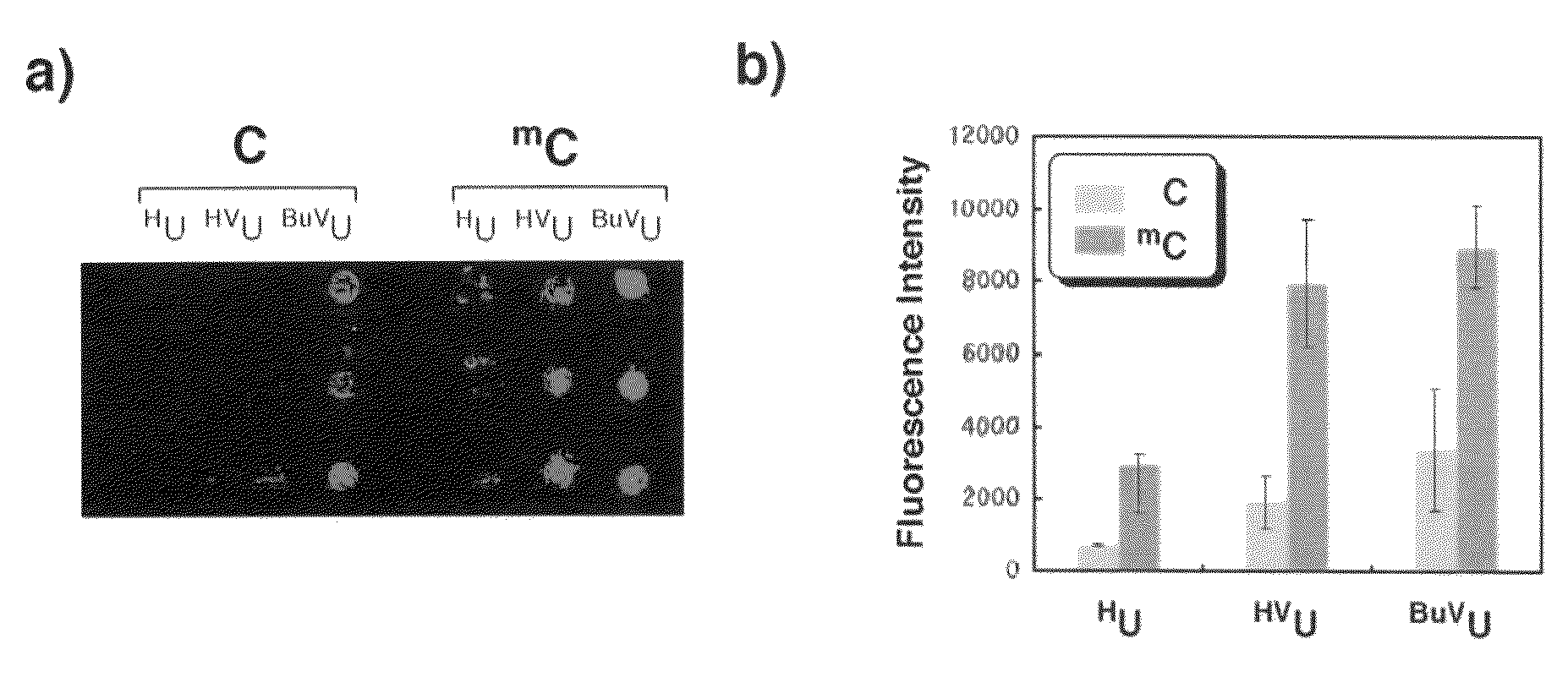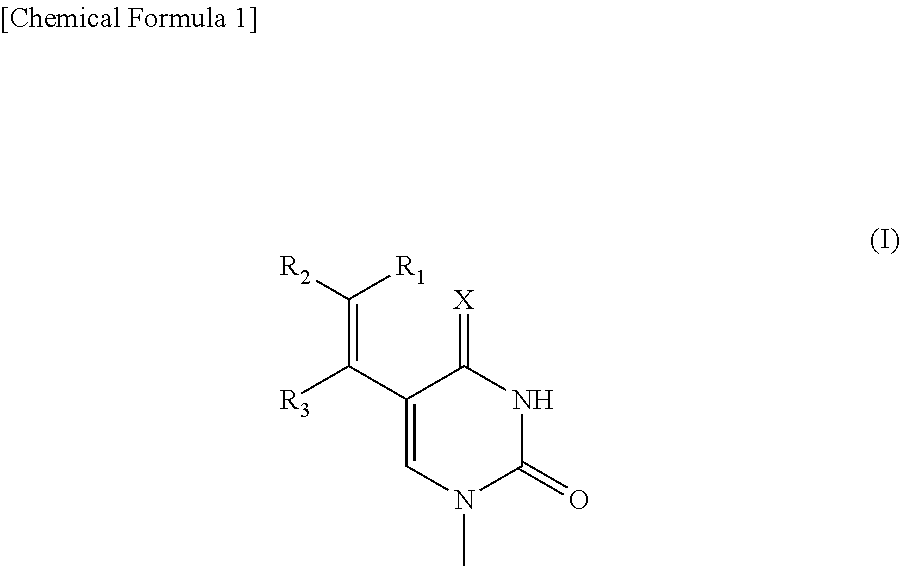Method for detection of methylcytosine using photoresponsive probe
a technology of methylcytosine and probe, which is applied in the field of methylcytosine detection using a photoresponsive probe, can solve the problems of insatiable fastness, convenience and high sensitivity of the conventional method, and achieve the effects of fast photochemical reaction, high sensitivity, and convenient and fast detection
- Summary
- Abstract
- Description
- Claims
- Application Information
AI Technical Summary
Benefits of technology
Problems solved by technology
Method used
Image
Examples
examples
[0111]Herein below, the present invention is explained in detail in view of the Examples. However, the present invention is not limited by the Examples.
[Synthesis of a Photoresponsive Nucleic Acid for Detection of Methylcytosine]
[0112]According to the pathway of Scheme (1) below, the photoresponsive nucleic acid which is used for detection of methylcytosine was synthesized.
[0113]
[0114]
Synthesis of 5-heptene-2′-deoxyuridine (HU) (2a)
[0115]5-iodo-2′-deoxyuridine (1) (500 mg, 1.41 mmol) was dissolved in DMF (2.5 ml) and dioxane (2.5 ml), and palladium acetate (31 mg, 0.14 mmol) was added thereto to obtain a suspension. Tributylamine (340 μl, 1.41 mmol) and 1-heptene (5 ml, 3.53 mmol) were further added, and the reaction was carried out at 100° C. for 20 minutes by heating by microwaves. After confirming at least 90% decrease in the reaction materials by TLC (CHCl3:MeOH=9:1), the obtained sample was purified by using a silica gel column with a development solvent of CHCl3:MeOH=9:1. HU w...
PUM
| Property | Measurement | Unit |
|---|---|---|
| wavelength | aaaaa | aaaaa |
| wavelength | aaaaa | aaaaa |
| wavelength | aaaaa | aaaaa |
Abstract
Description
Claims
Application Information
 Login to View More
Login to View More - R&D
- Intellectual Property
- Life Sciences
- Materials
- Tech Scout
- Unparalleled Data Quality
- Higher Quality Content
- 60% Fewer Hallucinations
Browse by: Latest US Patents, China's latest patents, Technical Efficacy Thesaurus, Application Domain, Technology Topic, Popular Technical Reports.
© 2025 PatSnap. All rights reserved.Legal|Privacy policy|Modern Slavery Act Transparency Statement|Sitemap|About US| Contact US: help@patsnap.com



